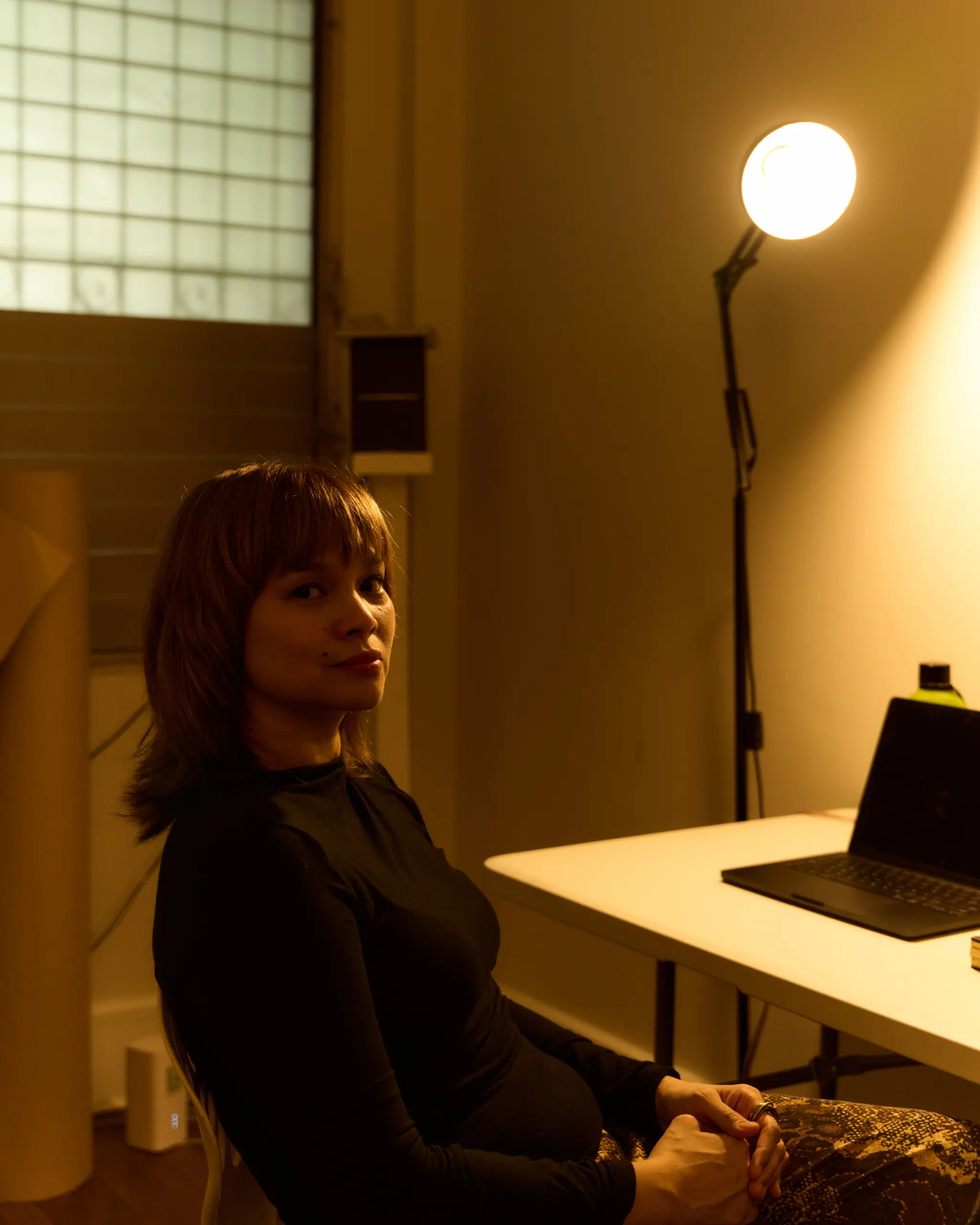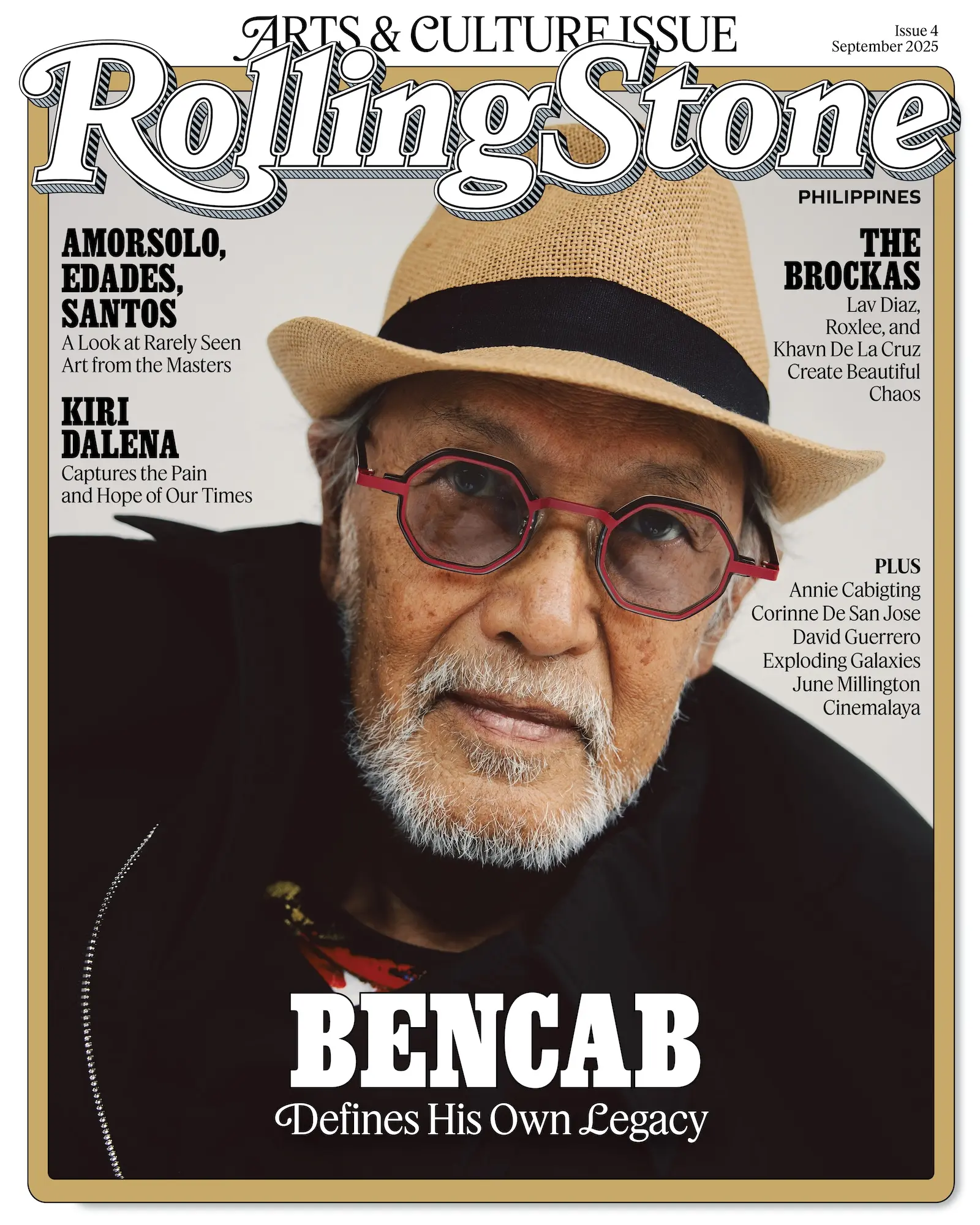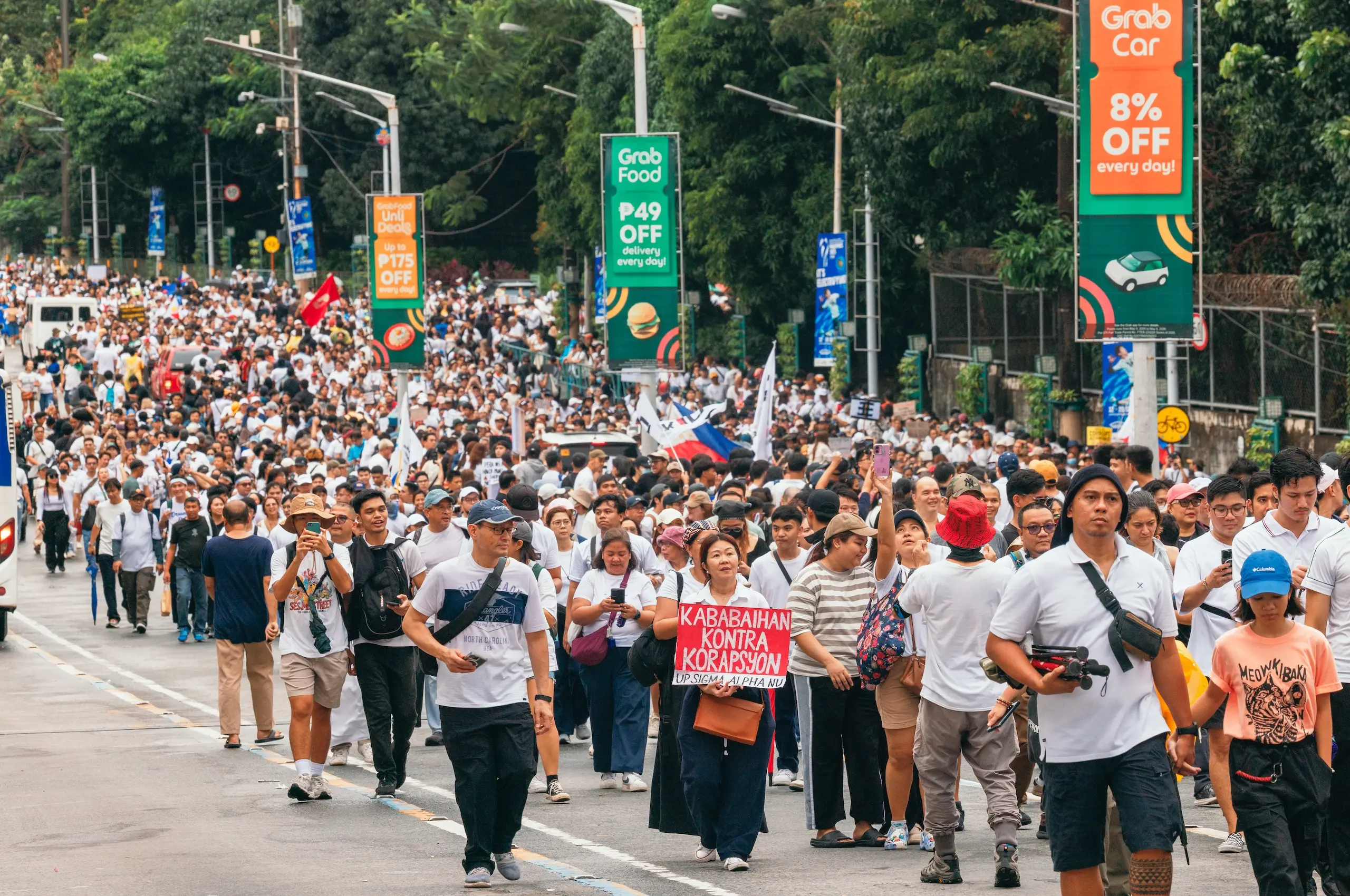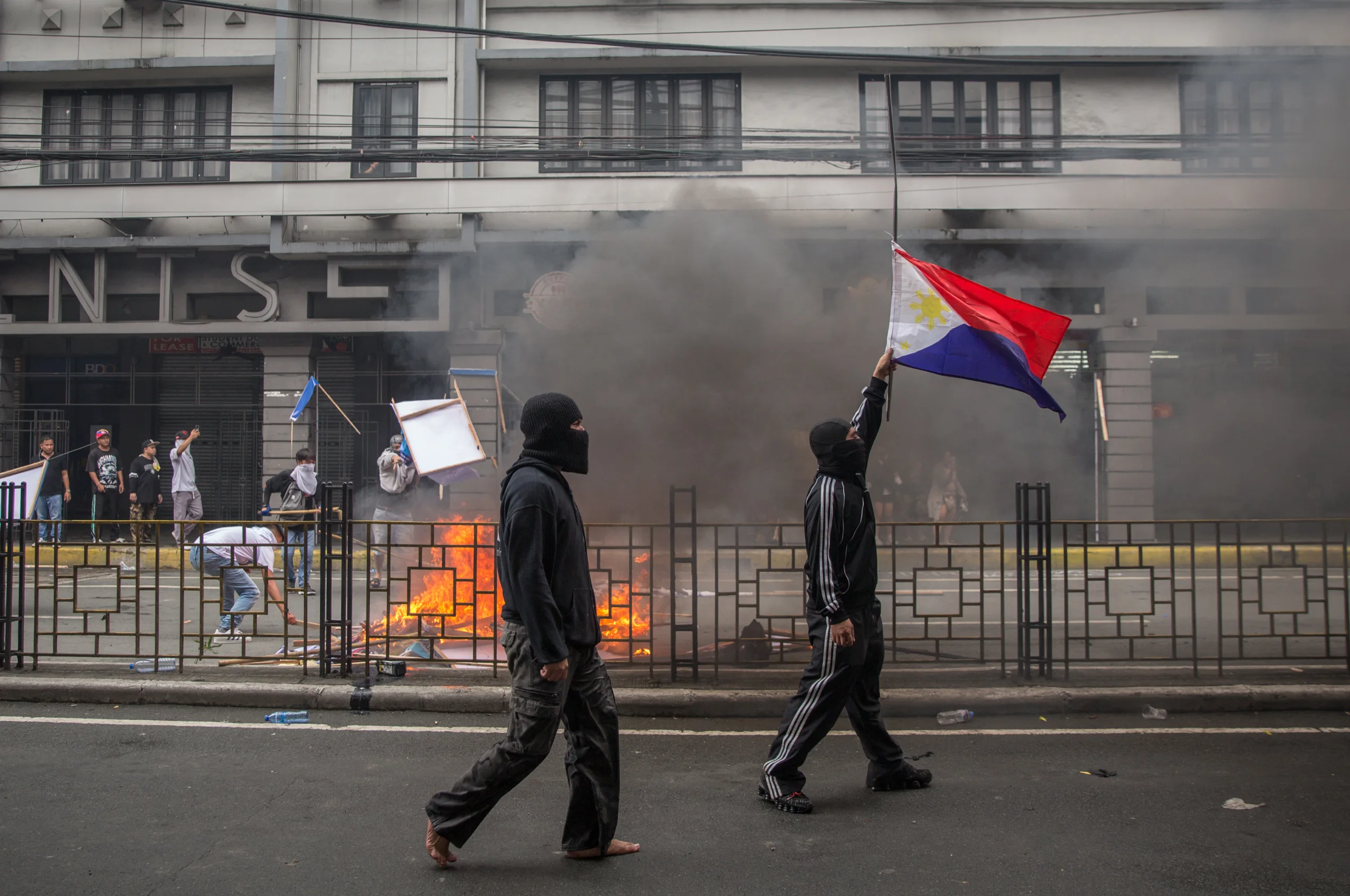In July, artist Corinne De San Jose wrapped her latest solo exhibition, Everyday is Like Sunday, at Silverlens Galleries Manila. The series of work revolved around the question of silence’s presence, as something many people don’t realize pervades everything, treating it as an absence of sound, rather than something in and of itself. Many of the pieces necessitate hardware and equipment, which give a tangible body and form to each work, but do not detract from the sound as the main subject of each. The objects reveal another aspect of silence, each telling a story of her approach to it.
The research for this latest body of work came from the two trips De San Jose has embarked on, one in Italy and the other in New York for the Asian Cultural Council fellowship. Situated in a 15th-century castle in Umbertide, Italy, the Civitella Ranieri Visual Arts Residency was the perfect place to think about silence in relation to space and geography. This was a stark difference from her time in New York, which was filled with the cacophony of the city, sound, and music, though one could argue that this merely presents an alternative perspective on silence.
De San Jose graduated from De La Salle University, taking up AB Communication Arts, and began working in the audio department in advertising shortly thereafter. She quit her job and initially intended to see how she could work professionally as a photographer, but found herself dissatisfied with this path as well.
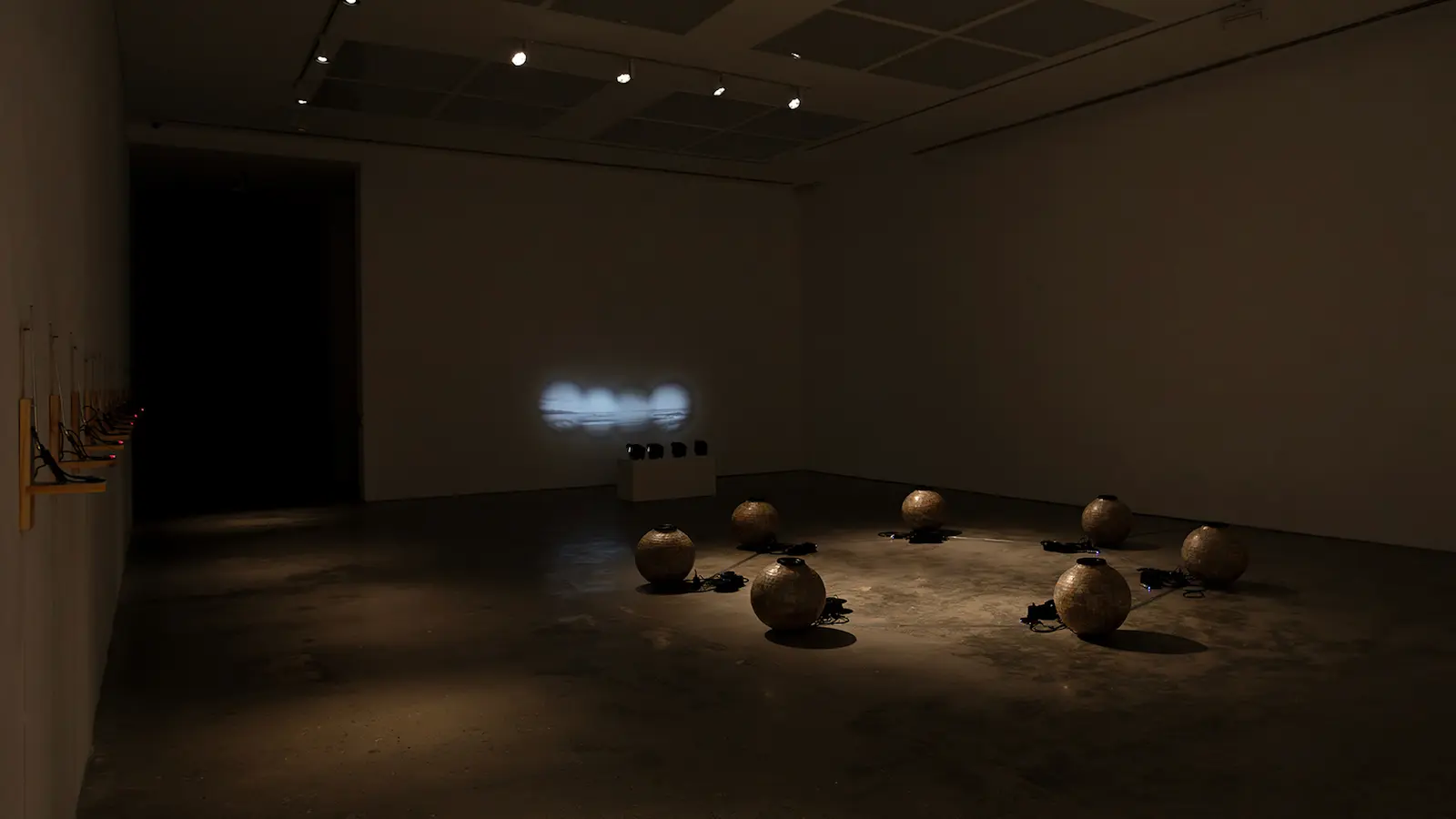
She met Silverlens Galleries founder Isa Lorenzo at a class her through [production designer and artist] Christina Dy, and mounted her first solo show in 2010 at a small space in Makati’s B-Side, just to see how it would go. Today, beyond her artistic practice, De San Jose works as a sound designer. She has worked on a number of films, including those by directors Lav Diaz, Erik Matti, and Raya Martin, creating the sound landscapes for these stories to live in.
Although some multi-hyphenates delineate and compartmentalize their different practices, the ruminations De San Jose encounters in her professional life inevitably bleed into her work and inform the ways in which she interrogates these ideas.
“I honestly don’t know what people think about my work. I get snippets, I get good feedback, but I don’t know, and I can’t place myself where I am. So, ‘di ko na lang siya iniisip.”
The notion of silence embodied, possessing a presence, may feel foreign, but in Everyday is Like Sunday, De San Jose presents it as something tangible, given shape by the other sounds that punctuate it. In his poem, “Keeping Things Whole,” Mark Strand writes, “In a field / I am the absence / of field.” Similarly, De San Jose proves the existence of silence as something, looking at the absence of sound as the presence of something else.
De San Jose’s work straddles the speculative and real, creating narratives by exploring possibilities, rather than doubling down on what people already know to be true. Each approach is an attempt to answer a “what if?” and she does it through abstractions that reveal their stories through sincere encounters and engagement rather than passivity.
In this interview, De San Jose talks about the struggle to combine her art practices, the construction of silences, sound design as practice, and likelihood of her joining a cult.
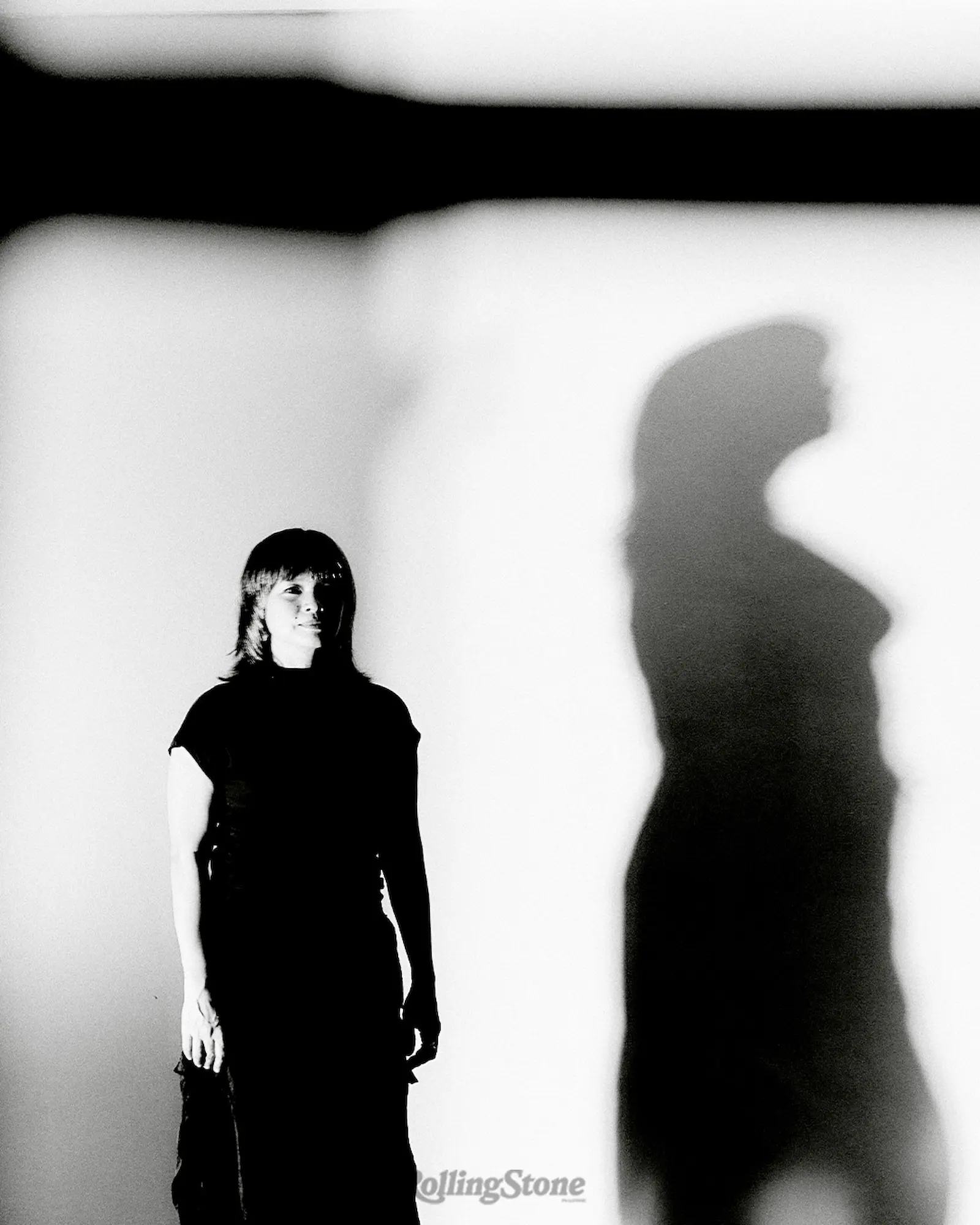
You’ve been practicing for a while, right? Like 2010?
I think 2010 is my first show ever, yeah.
Did you intend to get into art?
I think I feel like I was procrastinating forever because… I didn’t naman go to art school, ‘di ba? I went to La Salle. I didn’t know what I was doing at first, but then I started doing photography there. And then, parang I needed to get a job. So, I worked in advertising. First, doing audio for adverts. I was doing that for a while, and then I decided that it was time to quit my job and then figure out or try to see if I can do photography.
I was doing sound stuff before for indie films. Cinemalaya just started. So no one knew what to do with audio or how to do it, or they couldn’t afford a regular studio. Kami-kami lang gumagawa. That’s how I got into film, and then parang nagsabay na siya. I was doing advertising, photography, and audio work.
Tapos, ayoko na naman. So I left for a bit, and then I decided to do more photography, and thinking I would be a photographer for a living, but I didn’t like doing that either. And then I took a class with Isa [Lorenzo]. I met her through Christina Dy. Then I mounted my first solo na wala pa ako sa Silverlens [Galleries] noon. There was this small space in B-Side. I did it by myself, just to see if it’s something I would [like]. And I liked it.
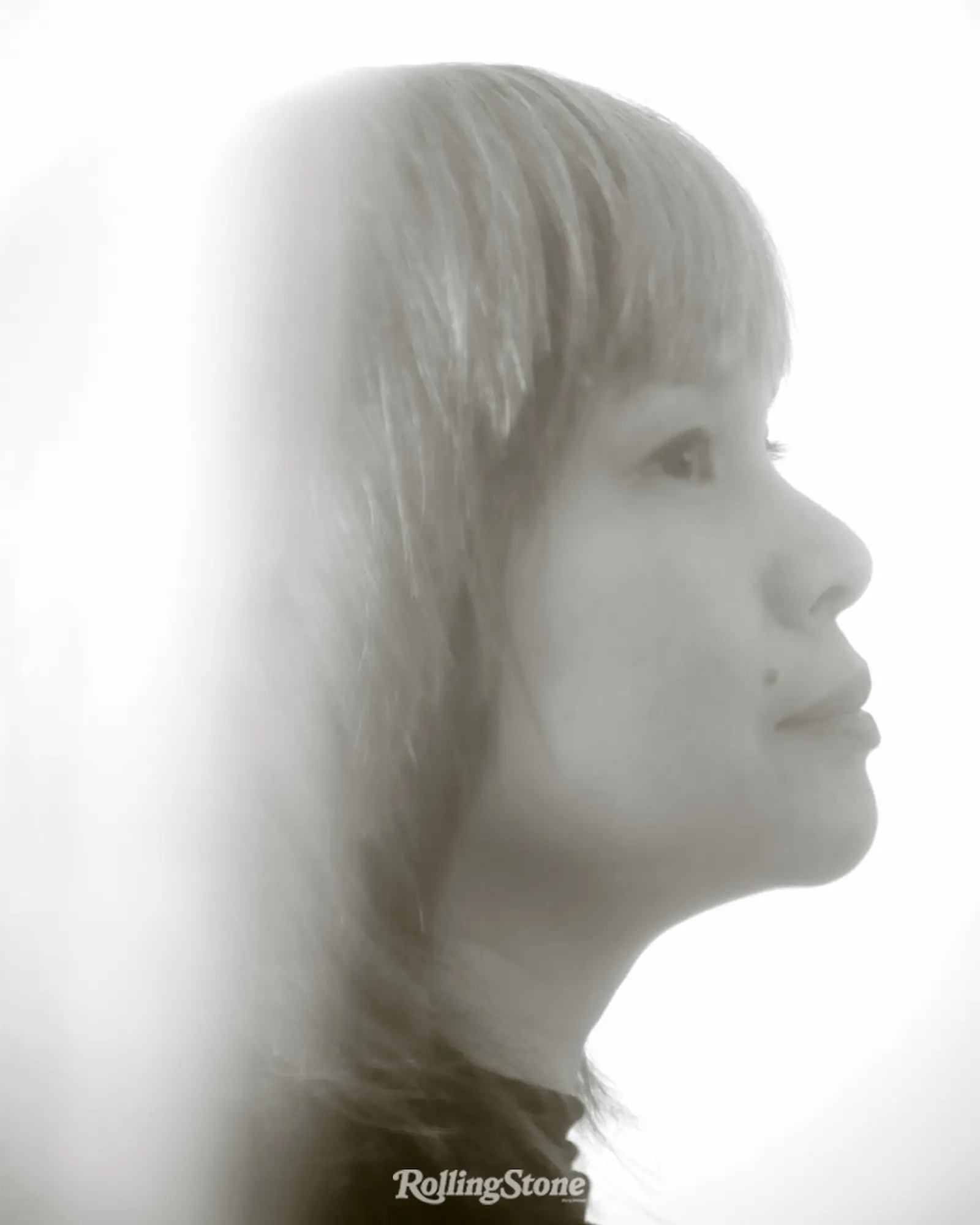
But what kind of photography were you pursuing at that time? Because your last cyanotypes were more conceptual and research-based.
More abstraction, actually, at the time. Even then, parang conceptual na talaga, and kind of integrated with performance. Because my first piece from that — one of the big pieces from that show — was parang, a 24-hour… I don’t know what you’d call it. Kasi, at the time, it was something I thought of while talking to a friend. I was taking a photo of my window every minute for 24 hours. So it was 1,400 photos of the same view. Puro window photos. That was the center of the show. And then everything else is an abstraction.
And then after that, I took a workshop, so the second show looked more like classic photography. I was shooting with a medium-format [camera] and digital, and they were just trees. So it was classic photography. I guess I was still kind of feeling my way through it.
Would you say your move towards sound was from photography to moving image, or is it a kind of amalgamation of everything you were interested in, or not?
Yeah. I think it is getting harder to do: to make, to have separate parallel practices because it was just seeping into each other. So it was like, “Okay, let’s try to work with sound. Put more sound in the work, in my art practice. Because I felt limited [by photography] na. I didn’t know what I wanted to do there anymore, but ‘di na kasya ‘yong gusto mong gawin.
“I think I learned [to appreciate silence] more in making films [because it] doesn’t really exist in the script. When you strip sound completely away from a clip in a film, it’s too much. It’s too jarring. It’s not natural, but it doesn’t even feel like [how] it’s supposed to feel. And so you need to orchestrate silence.”
That’s so interesting, because I sometimes find the Philippine art market so conservative in some ways that it can be hard to not make it accessible, but just like, make people pay attention, I guess, if they’re not already interested. Do you find that to be true?
I think so… But I think people are more open to it. People are learning more about it, and we get to talk about our work more. So, mas naiintindihan na siya, but mahirap talaga.
I imagine the response to the last show was very good. I wish I had been there.
Yeah, I think people are saying good things. But, I think for the most part, I honestly don’t know what people think about my work. I get snippets, I get good feedback, but I don’t know, and I can’t place myself where I am. So, ‘di ko na lang siya iniisip.
What was it like when you were away [doing art residencies]?
Italy was first. So, I was there, I think end of April to early June. And then June, I was here for a month. Then I left for New York for six months. Tapos bumalik ako dito [sa Manila] in January, so it’s been a while.
In Italy, I was working, although I was very lucky that my kapitbahay is sobrang masipag, so parang na-pressure ako. And also they ask you kasi what your requirements are, so nakita ko ‘yang place, and they gave me a very nice studio. It was huge. I did a lot of cyano-types, and then I did some field recordings. But, you know, it was really mas laru-laro, ‘di naman ako naka-produce nang maayos.
I guess that’s a good jumping point to your exhibit, Everyday is Like Sunday, because that resonated with me, the tangibility of like silence as a thing that occupies space. Yeah, my proposal rin naman for the residency in Italy was to research or parang to explore silence in space or in geography. ‘Di ba [ang] silence, kailangan mo siya i-justify? But that is really the goal. I have been trying to think about that. Even the first ever piece about sound, which was about silence already, or it was thinking about silence. And so I just wanted to pursue that.
Tapos in contrast, New York naman was kaguluhan.
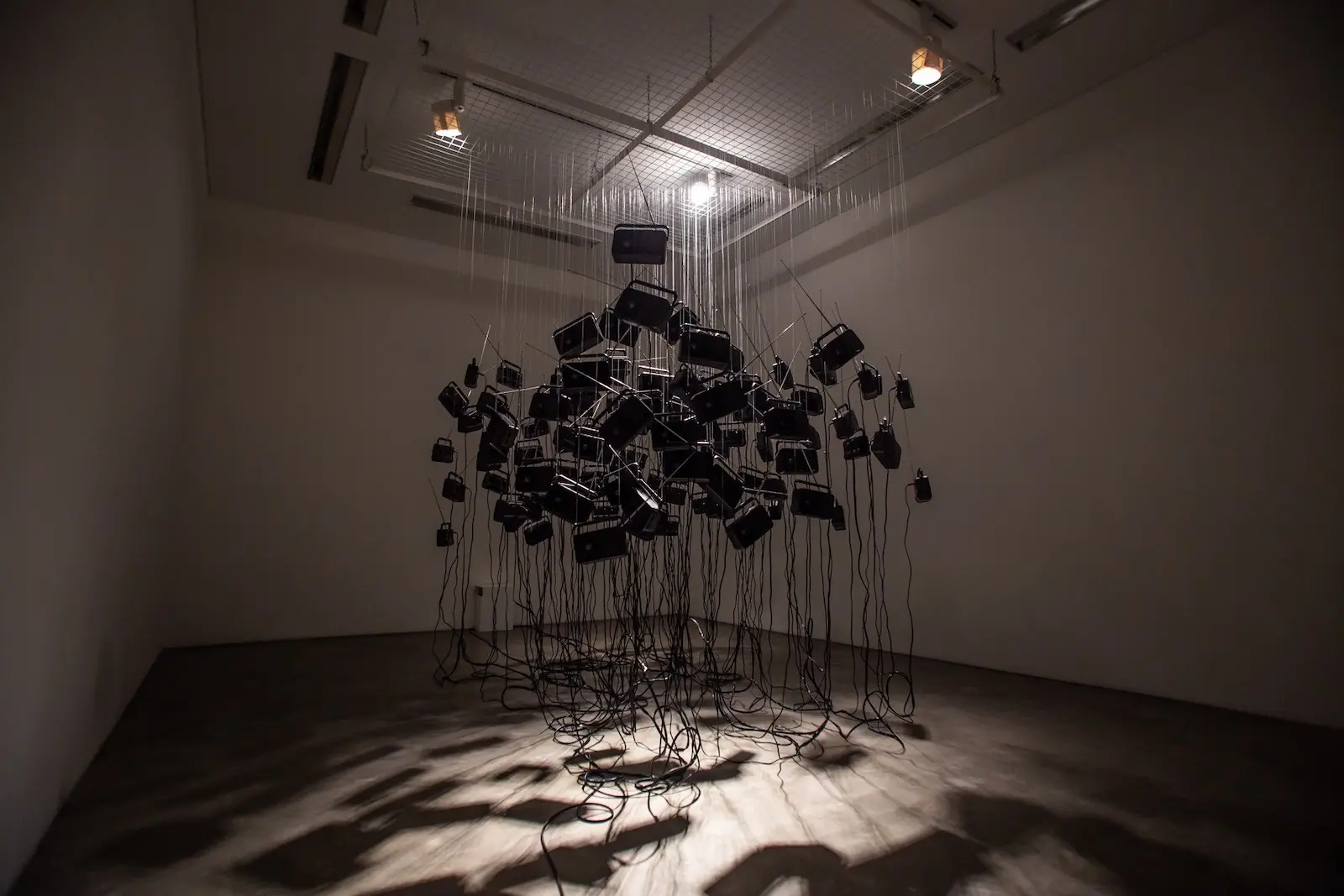
dimensions variable. Photo from Silverlens Galleries
You spoke about cults. Because I watched your video on the exhibition with the radio announcer that your lola would listen to…
Ang ganda kasi, ibang-iba ‘yong memory ko of how it sounded to me, and also how it was being explained to me at the time. Kasi sobra siyang nakakatakot. It sounded like it’s live talaga. Parang “Ano ‘to? Kinu-curse ba tayo nito?” Pero after researching, I realized that, “Oh no, he’s just a hippie, a New Age guy. It’s just that my parents or my lola didn’t understand. It wasn’t their generation to be open to that thing. ‘Di nila nagets. So, ‘pag pinapaking- gan ko ngayon — and there are records of his broadcast — it really feels more like when you listen to these New Age people now on YouTube. It’s the same vibe. Manifestation, meditation, energies, crystals. It’s just what it was. He was just ahead of his time, especially for radio.
Do you find it hard to carve out spaces for silence, like, because you’re surrounded by sound all the time?
Yeah. I think ‘yun na ‘yong masarap pag-usapan in the work also, or even in films. Because I think I learned that more in making films. Silence doesn’t really exist in the script. When you strip sound completely away from a clip in a film, it’s too much. It’s too jarring. It’s not natural, but it doesn’t even feel like [how] it’s supposed to feel. And so you need to orchestrate silence. It’s also a construct. Lalo na in the Philippines, kasi ang ingay-ingay nga, at hindi tayo komportable sa silence. Even in my family, they can’t stand the quiet. They need to be playing something all the time, or they need to be talking. And even, silence like a stillness. They don’t understand just sitting. [There] needs to be sound all the time, or some clutter or color.
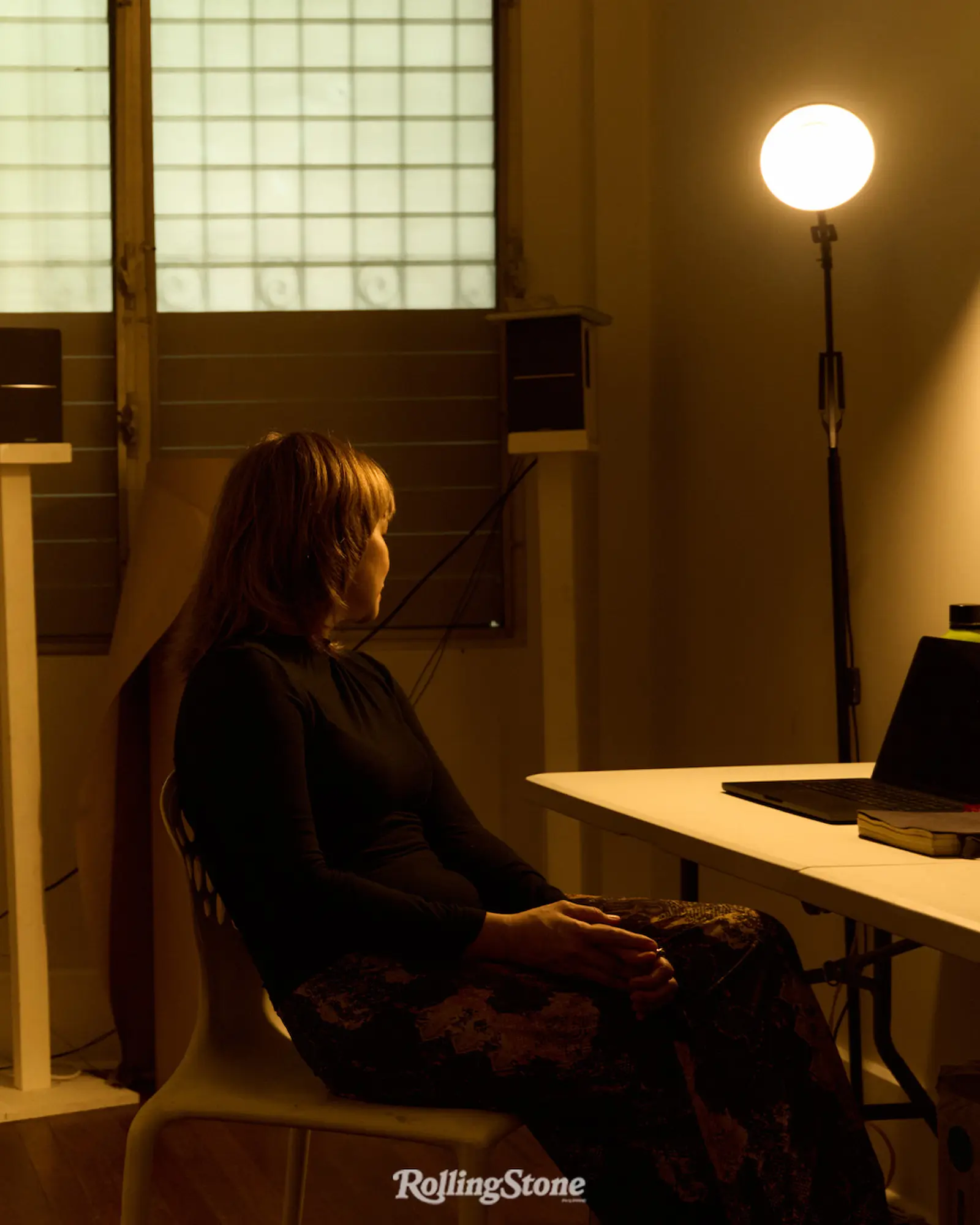
It feels like a waste of time to just kind of stop.
Yes. I think a lot of people don’t like their own thoughts. And, I understand that. Me, too. You make peace with your own thoughts. Nobody wants to do that, or if they can avoid it, they would. And it’s not something that’s also natural. You kind of have to learn that.
Read the rest of the story in the Arts and Culture issue of Rolling Stone Philippines. Get a copy on Sari-Sari Shopping, or read the e-magazine now here.
